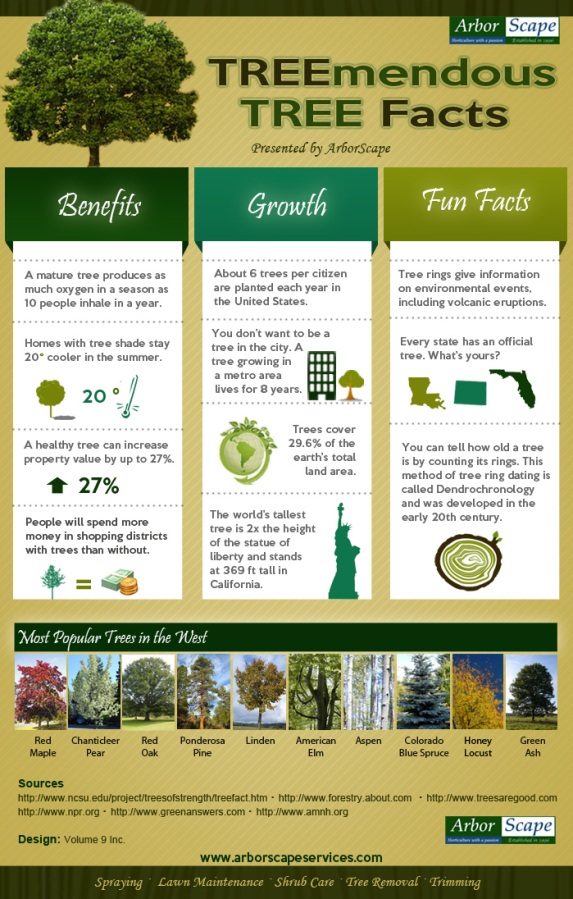The Ecological Impacts Of Cutting Down Trees: Secret Insights You Need To Think About
The Ecological Impacts Of Cutting Down Trees: Secret Insights You Need To Think About
Blog Article
Short Article Composed By-Dickey Mccullough
When it concerns the environmental influence of tree elimination, there are critical elements that demand your interest. From the elaborate web of connections within ecosystems to the succeeding results on environment patterns, the effects are extensive. You might be surprised to find the elaborate methods which the elimination of trees can reverberate throughout the environment. Keep tuned to unwind the elaborate links and ramifications of this apparently simple act.
Deforestation and Environment Loss
Deforestation and habitat loss are vital issues stemming from tree removal. When trees are lowered, it interrupts whole ecological communities. Not just are the trees themselves shed, but the homes and food sources of plenty of plant and animal types are ruined as well. Birds shed their nesting websites, animals lose their shelter, and pests lose their habitats. The results surge with the food cycle, affecting killers and prey alike.
Moreover, deforestation adds to climate adjustment. Trees play an essential function in taking in carbon dioxide, a greenhouse gas that traps warm in the environment. With less trees, there's less co2 absorption, causing boosted levels of this gas in the ambience and worsening global warming.
Environment loss is a straight result of deforestation, as the damage of woodlands suggests the loss of unique and diverse ecosystems. Lots of varieties are incapable to adapt to quick modifications in their environment, bring about populace decreases and, in some cases, extinction.
Shielding woodlands is vital to preserving the fragile balance of nature and ensuring the survival of many plant and pet varieties.
Effect on Biodiversity
The elimination of trees has a substantial influence on biodiversity, impacting the range and wealth of plant and animal types in an area. Trees provide environment and food sources for numerous microorganisms, from insects to birds to animals. When https://www.adn.com/politics/2020/10/03/candidate-qa-alaska-house-district-16-paul-bauer/ are eliminated, these species shed their homes and sources of nutrition, resulting in a decrease in their populations. This interruption can have cascading results on the whole environment.
Moreover, trees play an essential role in maintaining biodiversity by developing microhabitats within their covers, trunks, and roots that support a wide variety of species. When trees are lowered, these specialized atmospheres are destroyed, reducing the overall diversity of the area.
In addition, the elimination of trees can bring about a decrease in hereditary variety within plant populaces, as specific tree varieties may no more be able to recreate or distribute properly. Safeguarding trees and woodlands is necessary for maintaining biodiversity and ensuring the wellness of environments for future generations.
Dirt Disintegration and Climate Change
With trees being removed from a location, the disruption of dirt structure and stability takes place, leading to increased soil erosion. Trees play an essential function in avoiding erosion by holding dirt in position with their origin systems. When trees are gotten rid of, particularly in lots, the dirt becomes a lot more at risk to disintegration from wind and water. This erosion not only impacts the prompt environments yet can additionally lead to sedimentation in neighboring water bodies, impacting water quality and marine ecological communities.
In addition, trees aid manage the environment by absorbing carbon dioxide during photosynthesis. When trees are lowered, this all-natural carbon sink is reduced, contributing to raised levels of greenhouse gases in the ambience. This can intensify environment modification, resulting in even more severe weather events and interruptions in ecosystems worldwide.
Therefore, the elimination of trees not only increases dirt disintegration yet additionally contributes in the bigger ecological concern of climate modification. It's vital to take into consideration these elements when analyzing the impacts of tree elimination on the atmosphere.
Final thought
Now that you know the ecological influence of tree elimination, take into consideration the consequences prior to reducing trees. Logging interferes with environments, minimizes biodiversity, and contributes to dirt disintegration and climate adjustment. By being https://andyppuug.estate-blog.com/32252468/initiate-your-grasp-of-tree-removal-prices-by-recognizing-the-vital-aspects-that-influence-costs-which-will-help-you-in-making-informed-selections-and-may-lead-to-economic-savings of the impact of tree elimination, you can help secure our atmosphere and preserve the fragile equilibrium of nature. Make informed choices and consider different options to minimize the adverse effects on our earth.
